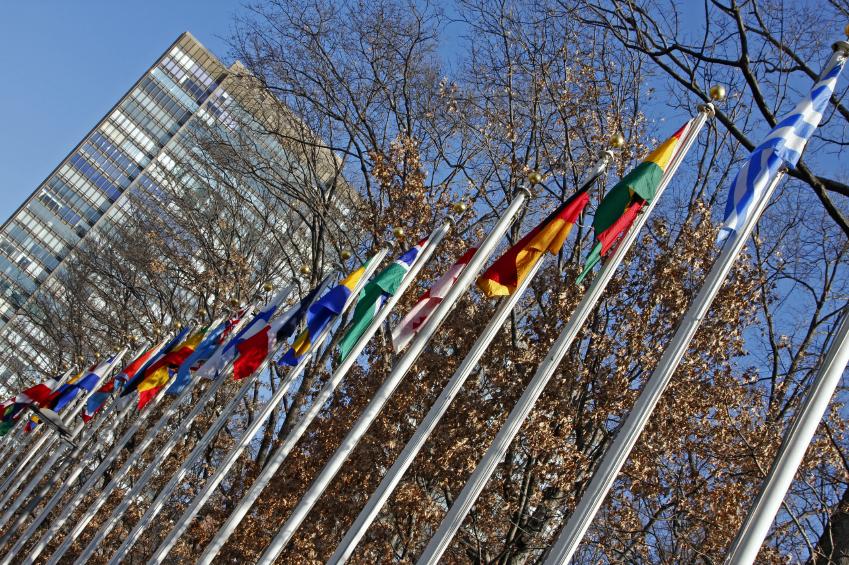
When the World Trade Organisation (WTO) reached agreement late last year on a “trade facilitation agreement” (TFA) to streamline customs procedures and cut red tape for members, hope returned that the Doha round of trade talks was back on track to a global deal. I previously wrote that this was a satisfactory breakthrough given the difficulty of aligning all nations behind an agreement and the deficit of trust that had built up over many failed rounds of negotiations.
But the TFA fell apart just before it was due to be ratified at the end of July. India, concerned that the “peace clause” agreed on its food subsidy scheme as part of the TFA would have left it vulnerable when it lapsed in four years, pulled out. As India pulls out and the WTO requires consensus to ratify any agreement, the failure to agree on the TFA has left the WTO without a global deal to its name.
Another perspective
This is not an unusual negotiation hiccup. On occasion, when we believe we’ve done everything right to close a deal, our opposites pull out during what we call “the commitment phase”, as was the case with India’s tactics, which we may consider as unreasonable, assuming some deeper strategy was at play. “Did they even want a deal to begin with?” we might ask ourselves.
But as I point out in my book, Value Negotiation, How to Finally Get the Win-Win Right, our assumptions blind us from success. Despite what we think of the quality of the offer on the table, the other side might see it completely differently.
So let’s diagnose some of the perceptions, beliefs or fears that India may have that could be the underlying reasons for them to say “no” in this case by analysing India’s “Currently Perceived Choice” (CPC), a tool we use in negotiations to understand the point of view of the other side when they say “no” to our proposals.
India may still feel distrust of the WTO, given previous agreements made during the Uruguay round of trade talks in the mid ‘90s, when rich countries were allowed to keep many protectionist policies in return for the promise of reducing them. India, however, was left with stricter limits as it wasn’t deemed to be subsidising farmers at the time and thus did not benefit from the grandfathering policy that the rich countries benefited from.
India may also feel that the WTO is holding up the food security talks, claiming that it is not working to find a permanent solution to developing country policies on public stockholding of food for security reasons. It may also be upset that the WTO continues to use 1986-1988 reference pricing for food commodities, inflating the country’s perceived protectionism.
Besides, by saying “no”, India comes across as a strong and important player in the international arena as it stands up to the WTO and to the rich countries behind it. India’s politicians can internally pose to their constituents as crusaders fighting for the good of the Indian population and successfully defending Indian interests against the whole world. Indian politicians may feel that they are doing the right thing for their people from a humanitarian perspective.
Perhaps India is afraid of the outcome if it agrees. The new business-minded government might be faced with huge popular discontent if it appears to be pandering to a global trade deal at the expense of the rural poor and farmers. It might also be at a loss of how to move forward given that it inherited the current legislation guaranteeing food to nearly 70 percent of the population from the previous government.
On the other hand, if India were to say “yes” they would be allowed the food subsidy for the next four years and would not be seen as an international spoiler of the WTO agreement or have to face future consequences in the international arena for taking the decision to withdraw from the agreement. However, faced with the prospects of a continuing impasse, the WTO is likely to keep pursuing India so it can notch up its first global deal. Therefore, the individual consequences of saying no seem more positive and less risky than saying yes. It becomes easier to understand where India is coming from and how saying “no” seems in their perspective the smart and right thing to do.
Getting India to ‘yes’
With a good understanding of India’s CPC, we can try to change their “no” into a “yes”. As things stand, however, we are at an impasse. For one, the WTO members could create a better proposal to India so as to bring it back to the table and eventually say “yes” to the TFA. This would involve reducing the benefits listed above for saying “no” as well as the risks of saying “yes”, while increasing the benefits of saying “yes” as well as the risks or costs of saying “no”. However, the WTO is institutionally limited in its ability to do any or most of that and doing so in a multiparty negotiation environment could reward India’s “bad” behaviour and invite other countries in the future to attempt similar tactics to extract more value out of WTO agreements.
Another way the WTO could get India moving in its desired direction would be to rule out allowing India to do nothing as an alternative. We cannot expect a negotiating partner to act if they believe that doing nothing and buying time costs them less than deciding. To generate momentum in a positive direction, the WTO could attempt to change the perceptions of all India’s constituents around the deal and of the time consequences of the deal, but not the deal itself as in the above paragraph. The WTO could consider trying to reshape India’s perception of the deal to be more positive, writing a success speech that India could use internally and internationally to save face if it were to change its mind, convincing the country’s negotiators and leadership that there is still time to change their mind. They could also communicate that time is not a pressing concern for the WTO and that India’s delay costs in saying “yes” are not as low as they may think.
The WTO could also introduce action-forcing events, such as increasing the chances that important options or resources now or in the future will be lost or by introducing firmer deadlines. However, these moves could be perceived as win-lose, pressure tactics and may go against the intended and advocated spirit of the WTO. So what in practice might any of these above moves look like at the level of an organisation such as the WTO?
Overcoming the impasse
It could be time to drop consensus. My colleague Pushan Dutt aptly describes the WTO’s challenge in terms of “nothing gets agreed until everything is agreed”. This strategy is a recipe for things moving slowly, he adds. As I alluded to in my previous article about multiparty negotiations, one of the biggest hurdles to achieving broad-based agreement is the “blanket effect”. When two people share a blanket, a more comfortable equilibrium can be more easily achieved, than when it has to be shared among more parties that could potentially be left in the cold.
This calls for a new way of moving ahead, signing up willing and able countries to broad agreements and incentivising stragglers to join sooner rather than later would be a major morale booster for willing countries tired of the “talking shop”.
It may also be time to re-evaluate the way arguments and disputes are handled at the WTO. There should be an equal respect of nations in such a global body, but not of arguments. In legal negotiations, there is always a problem of ranking which laws supersede other laws. The same can be said of trade negotiations. When collective rules are established, how much recourse does each nation have to argue with the collective rules and regulations? How much room there should be for national and more limited scope concerns when confronted with global concerns? A process negotiation to establish an agreed hierarchy of arguments could create a more rational and less vulnerable exploitation environment to more easily discuss and agree on points that promote the broader WTO vision.
And if India gets a “carve out” for its national food subsidy scheme, what is to stop other nations raising similar issues or kidnapping the agenda as India has done? Without belittling the food problem in India, other countries also have similar concerns and yet collectively decided to go forward. While understanding India’s national priorities, the WTO should attempt to put India’s arguments in the context of the benefits to other parties. The TFA is expected to boost developing country GDP by $500 billion, which includes India.
With more of a hierarchy for local, national, regional or global issues, the WTO could pave the way to move ahead with willing groups more easily and rid the baggage of some countries getting their way with what could come across, even if unintentionally so, as bullying or hostage-taking tactics.

-
View Comments
-
Leave a Comment





No comments yet.